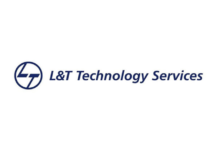This is an exclusive article series conducted by the Editor Team of The Mainstream with Mr. Sandiip Bhasal, Chief Technology Officer at Coachsbansal.com
Despite significant investments and efforts, many higher education institutions struggle to fully realize the potential of digital transformation. What should be a seamless evolution often becomes a complex journey fraught with challenges. Ineffective communication, flawed data strategies, and a lack of focus on the human element are key reasons these initiatives often falter. As Stephanie Woerner from MIT’s Sloan School of Management aptly states, “The easy things have been done and the things that are left are hard,” especially when integrating the human aspect of digital change. This article delves into the core issues and explores strategies to navigate this digital labyrinth.
Change Management
Change management is a critical challenge in higher education, where resistance to new tools and processes is common. This resistance often stems from inadequate planning and architectural errors. The tools implemented frequently fall short in key areas such as:
- Business Requirements
- Innovation and Automation
- Principle of Continuous Improvement
Given the volatile nature of the industry and the unique requirements of each institution, a one-size-fits-all approach is impractical. Many platforms lack the scalability needed for customization. To address these challenges, institutions must create a clearly defined business requirement document before selecting a technology solution. This ensures all stakeholder needs are considered, leading to better buy-in and smoother change management.
Digital transformation is not merely about implementing technology; it’s about fostering a culture of change, encouraging digital adoption, and bringing agility to processes. The goal is to save time and effort while providing an excellent user experience. Technology should act as an enabler, helping in mundane activities and allowing individuals to work smarter. The solution design and architecture must be human-centric.
Data Security and Privacy
In the era of digital transformation, data has become one of the most valuable assets for any organization, and higher education institutions are no exception. From student onboarding to alumni status, institutions must preserve records in compliance with regulatory guidelines. Managing records for various programs, including undergraduate, postgraduate, doctoral, and specialized courses, has traditionally been a manual process. However, with advancements in Big Data, Machine Learning, AI, and blockchain technologies, embracing digital transformation is imperative.
Current Challenges:
- Unstructured Datasets: Handling vast amounts of unstructured data.
- Inconsistent Data Formats and Standards: Lack of uniformity hinders seamless integration.
- Manual Intervention: Over-reliance on manual processes leads to inefficiencies and errors.
To achieve seamless operations, institutions must establish proper data structures, architecture, and integration practices. Digital transformation is about fostering a culture of change, encouraging digital adoption, and enhancing process agility. By focusing on these areas, institutions can save time, reduce effort, and significantly improve user experience.
Process and Documentation
Embarking on a digital transformation journey in higher education requires robust processes, comprehensive documentation, and strong governance. Unlike other industries, higher education digital transformation must be meticulously driven by the right processes and best practices. Documentation serves as the backbone for successful implementation.
A well-documented transformation journey should include the management’s vision and mission, accompanied by clearly defined success metrics. Key components that must be documented include:
- Requirement Documents: Detailed specifications ensuring alignment with institutional goals.
- Stakeholder Buy-In: Engaging all stakeholders and securing their commitment.
- Technology and Partner Selection Guardrails: Criteria for selecting appropriate technologies and partners.
- Design, Development, and Delivery Methodology: A structured approach to designing, developing, and delivering solutions.
- Adoption and Success Metrics: Metrics to measure the adoption rate and success of implemented solutions.
- Operation and Maintenance: Plans for ongoing operation and maintenance to ensure sustainability.
Human-centric design is crucial for the adoption of such programs. Technology should streamline mundane activities and allow individuals to work smarter. By keeping humans at the center of the design, institutions can foster a culture of change and encourage digital adoption.
Importance of Goals and Metrics
One of the critical reasons many digital transformation journeys in higher education fall short is the lack of clearly defined goals and metrics. Establishing precise objectives and measurable outcomes is essential for steering any digital initiative towards success. Without these, institutions are unable to gauge progress or identify areas needing improvement.
Challenges in Implementation:
- Unclear Expectations: Without clear goals, stakeholders may have different interpretations of success.
- Inability to Measure Progress: Without metrics, institutions cannot accurately track progress.
- Lack of Accountability: Metrics foster accountability by establishing clear performance indicators.
Strategic planning involves defining clear, achievable goals aligned with the institution’s vision. Engaging stakeholders in this process ensures their buy-in and commitment. Continuous evaluation and refinement of these goals ensure that the institution remains on track and can adapt to new challenges and opportunities.
Lack of Executive Sponsorship
The absence of executive sponsorship is a significant hurdle that undermines the success of digital transformation efforts in higher education institutions. Executive sponsorship involves the active support and involvement of senior leadership, which is crucial for driving and sustaining transformation initiatives.
Challenges Due to Lack of Executive Sponsorship:
- Insufficient Resources: Securing necessary resources becomes challenging.
- Lack of Strategic Alignment: Projects may lack a clear purpose.
- Poor Decision-Making: Decision-making processes may become sluggish or fragmented.
- Limited Stakeholder Buy-In: Lack of buy-in from faculty, staff, and students.
- Inadequate Change Management: Efforts to manage change may fall short.
- Fragmented Accountability: Accountability for digital transformation efforts may become unclear.
Best Practices for Securing Executive Sponsorship:
- Articulate the Vision: Clearly communicate the vision and strategic importance of the initiative.
- Demonstrate Value: Present a compelling case for the benefits of digital transformation.
- Engage Early and Often: Involve executive leaders early in the planning process.
- Build Alliances: Identify and cultivate relationships with key influencers.
- Showcase Quick Wins: Demonstrate tangible benefits through early successes.
Ineffective Communication
One of the critical barriers to successful digital transformation in higher education is ineffective communication. Clear and consistent communication is essential for aligning stakeholders, managing expectations, and ensuring everyone is on the same page.
Challenges Due to Ineffective Communication:
- Misaligned Expectations: Stakeholders may have different expectations.
- Information Silos: Critical information may not be shared across departments.
- Lack of Transparency: Transparency is vital for building trust.
- Inadequate Stakeholder Engagement: Stakeholders may feel excluded or undervalued.
- Delayed Decision-Making: Communication breakdowns can result in delays.
Best Practices for Effective Communication:
- Establish Clear Communication Channels: Define and implement clear communication channels.
- Develop a Communication Plan: Create a comprehensive communication plan.
- Promote Transparency: Foster a culture of transparency.
- Engage Stakeholders Early and Often: Involve stakeholders from the outset.
- Leverage Technology: Use digital tools and platforms to enhance communication.
- Train and Support Communication Leaders: Identify and train key individuals to act as communication leaders.
Lack of Governance Framework
A robust governance framework provides the structure and processes necessary to guide digital transformation, ensuring accountability, consistency, and alignment with institutional goals.
Challenges Due to Lack of Governance Framework:
- Lack of Clear Roles and Responsibilities: Confusion about responsibilities.
- Inconsistent Decision-Making: Decisions may be made on an ad-hoc basis.
- Insufficient Oversight: Projects may go off-track without regular oversight.
- Poor Risk Management: Institutions may be unprepared for potential challenges.
- Limited Stakeholder Engagement: Stakeholder input may be overlooked.
Best Practices for Establishing a Governance Framework:
- Define Clear Roles and Responsibilities: Establish a governance structure.
- Standardize Decision-Making Processes: Implement standardized processes.
- Regular Oversight and Monitoring: Conduct regular reviews and audits.
- Effective Risk Management: Develop a risk management plan.
- Engage Stakeholders: Establish processes for engaging stakeholders.
Lack of Market Research
Understanding the market is crucial for tailoring digital initiatives that meet the specific needs and expectations of students, faculty, and other stakeholders.
Challenges Due to Lack of Market Understanding:
- Misaligned Offerings: Solutions may not align with the needs of the target audience.
- Ineffective Communication Strategies: Struggle to convey the value of initiatives.
- Inadequate Competitive Analysis: Institutions may fall behind in adopting best practices.
- Poor Stakeholder Engagement: Generic approaches may fail to resonate.
- Missed Opportunities for Innovation: Institutions may miss emerging trends.
Best Practices for Market Understanding:
- Conduct Market Research: Gather data on the needs and preferences of stakeholders.
- Develop Personas: Create detailed personas representing different segments.
- Monitor Industry Trends: Stay informed about industry trends and advancements.
- Engage with Stakeholders: Regularly engage with stakeholders.
- Utilize Data Analytics: Leverage data analytics to gain insights.
From my experience in higher education digital transformation, I’ve observed several key insights and lessons:
- Holistic Approach: Successful digital transformation requires a comprehensive strategy that extends beyond mere technology implementation. It involves cultivating a culture of change, promoting digital adoption, and ensuring that all stakeholders are aligned with the new processes and tools.
- Stakeholder Buy-In: Early engagement of stakeholders is crucial. Clear communication, transparency, and involving stakeholders in decision-making processes build trust and commitment, making change management smoother and more effective.
- Tailored Solutions: Each institution has unique requirements and processes, making a one-size-fits-all approach impractical. Customizing solutions to fit the specific needs of the institution ensures scalability and flexibility.
- Data Management: Effective data management is essential. This includes developing a clear data strategy, ensuring data accuracy, and maintaining consistent data formats. Proper data governance helps meet regulatory requirements and leverages data for informed decision-making.
- Continuous Improvement: Digital transformation is an ongoing journey. Institutions must adopt the principle of continuous improvement, regularly evaluating and updating their processes and technologies to stay ahead of the curve.
- Human-Centric Design: Technology should act as an enabler, helping individuals work smarter and more efficiently. The design and architecture of solutions must be human-centric, focusing on enhancing the user experience and reducing manual intervention.
- Challenges and Adaptability: The higher education sector is highly volatile, with constantly evolving needs and challenges. Institutions must remain adaptable, continuously evolving their capabilities and generating new value from digital initiatives.
Also read: Viksit Workforce for a Viksit Bharat
Do Follow: The Mainstream formerly known as CIO News LinkedIn Account | The Mainstream formerly known as CIO News Facebook | The Mainstream formerly known as CIO News Youtube | The Mainstream formerly known as CIO News Twitter
About us:
The Mainstream formerly known as CIO News is the premier platform dedicated to delivering the latest news, updates, and insights from the CIO industry. As a trusted source in the technology and IT sector, we provide a comprehensive resource for executives and professionals seeking to stay informed and ahead of the curve. With a focus on cutting-edge developments and trends, The Mainstream formerly known as CIO News serves as your go-to destination for staying abreast of the rapidly evolving landscape of technology and IT. Founded in June 2020, The Mainstream formerly known as CIO News has rapidly evolved with ambitious growth plans to expand globally, targeting markets in the Middle East & Africa, ASEAN, USA, and the UK






